#challenger sts-51L
Explore tagged Tumblr posts
Text
Grissom White Chaffee Komarov Dobrovolsky Patsayev Volkov Jarvis McAuliffe McNair Onizuka Resnik Scobee Smith Anderson Brown Chawla Clark Husband McCool Ramon
“At the going down of the Sun, and in the morning, we will remember them…”
The above is the very first public performance of the longer version of “Fire in the Sky” performed by Jordin Kare (himself now deceased) at the Challenger memorial concert, Bayfilk III, 9 March 1986, San Jose, California.
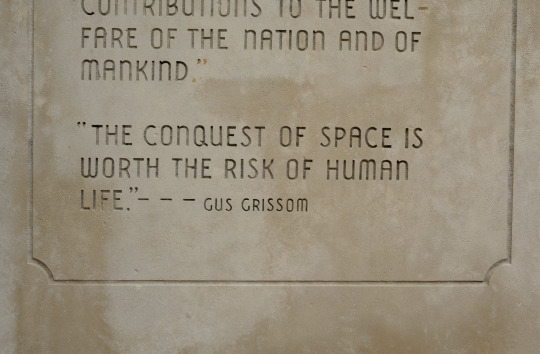

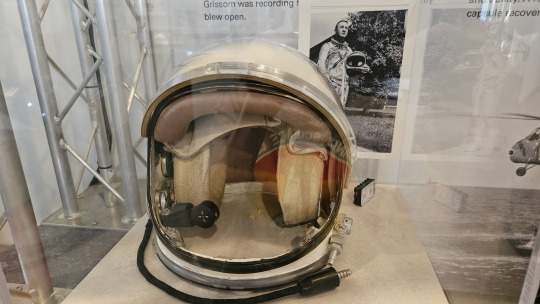
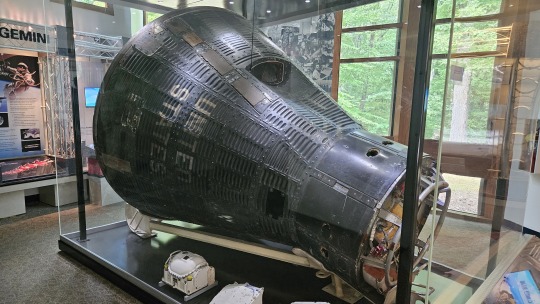
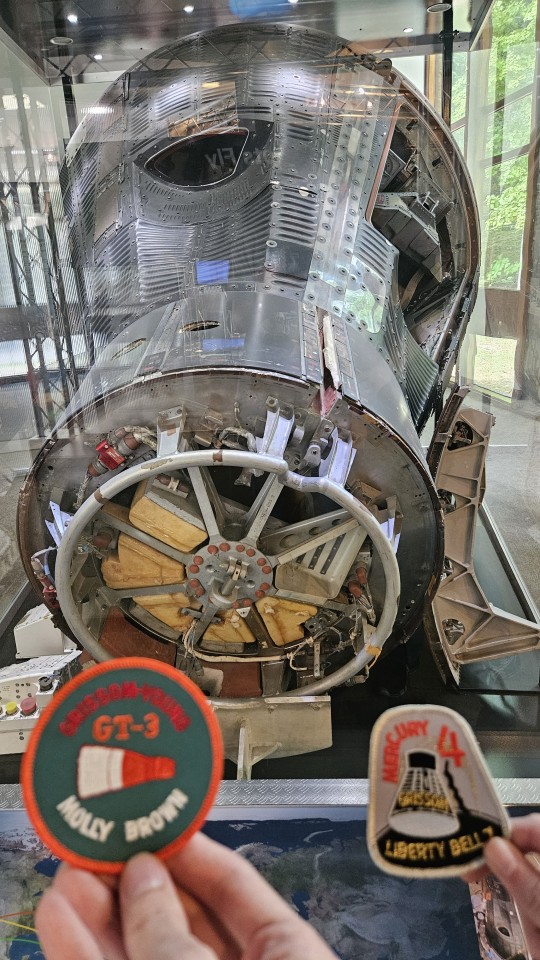
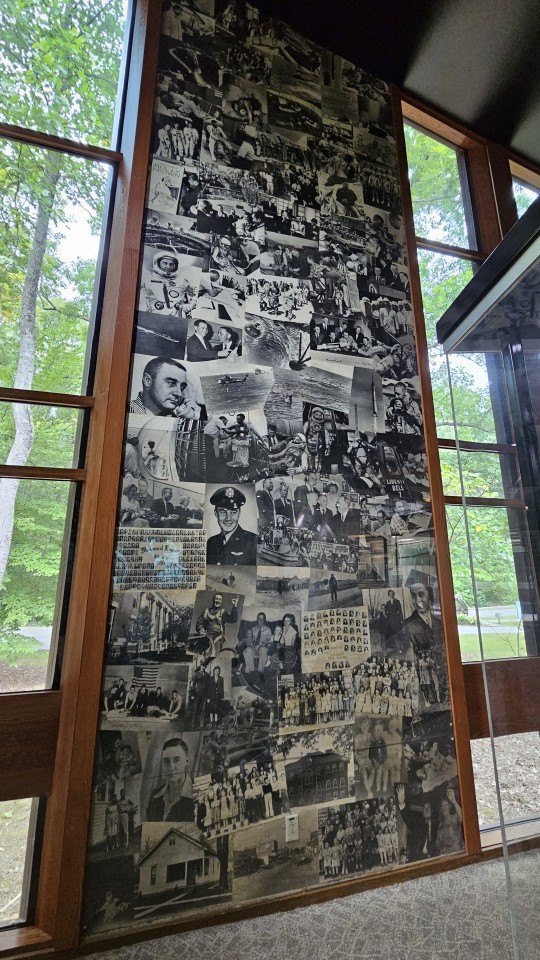
Scenes from the Grissom Memorial
Spring Mill State Park / Mitchell, Indiana
#apollo 204#soyuz 1#soyuz 11#challenger sts-51L#columbia sts-107#in memoriam#the stars are ours#the dream is alive
227 notes
·
View notes
Text
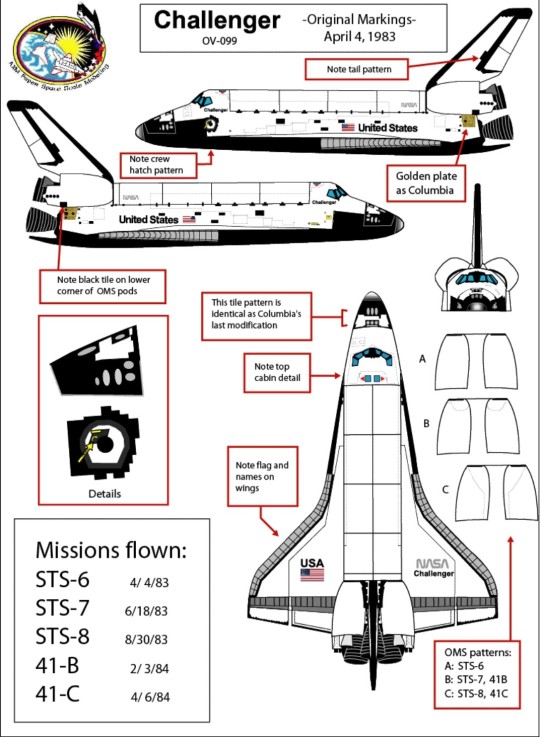
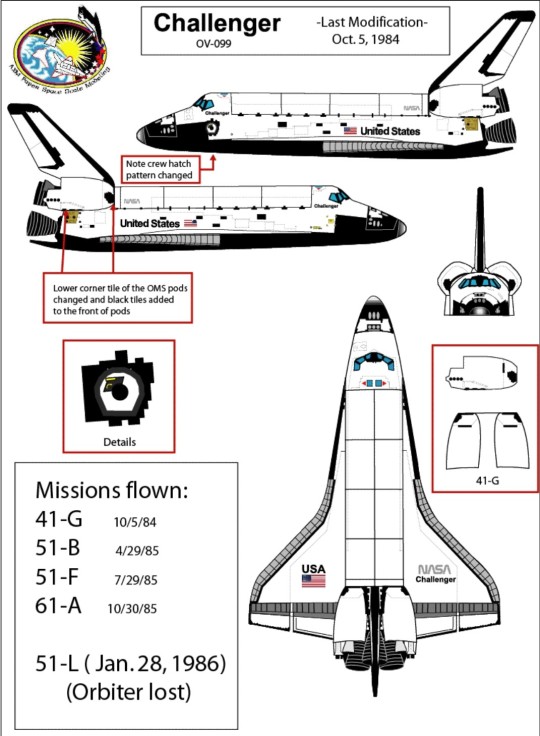
Reference guide of all the external changes made to the Space Shuttle Orbiter Challenger (OV-099) during her lifetime.
Date: 1983-1985
Documents by Alfonso X Moreno: link
#Space Shuttle#Space Shuttle Challenger#Challenger#OV-099#Orbiter#NASA#Space Shuttle Program#reference guide#STS-6#STS-7#STS-8#STS-41-B#STS-41B#STS-11#STS-41-C#STS-41C#STS-13#STS-41-G#STS-41G#STS-17#STS-51-B#STS-51B#STS-51-F#STS-51F#STS-61-A#STS-61A#STS-51-L#STS-51L#my post#April
92 notes
·
View notes
Text

STS-51L Crew Back Row: Mission Specialist Ellison S. Onizuka, Payload Specialists Christa McAuliffe and Gregory B. Jarvis, Mission Specialist Judith A. Resnik, Front Row: Pilot Michael J. Smith, Commander Francis R. Scobee, Mission Specialist Ronald E. McNair.
NASA photo
6 notes
·
View notes
Text



January 28, 1986 — The crew of STS-51L Challenger is lost during launch
STS-51L was the 25th Space Shuttle mission and the final flight of Challenger. Its objectives were to observe Halley's Comet during its nearest approach to Earth and be the first flight of the Teacher in Space Project, during which schoolteacher Christa McAuliffe would conduct two live lessons from orbit. 73 seconds after liftoff, an explosion resulted in the loss of Challenger and her crew.
"The crew of the Space Shuttle Challenger honored us by the manner in which they lived their lives. We will never forget them, nor the last time we saw them, this morning, as they prepared for their journey and waved goodbye and 'slipped the surly bonds of Earth' to 'touch the face of God.'" - President Ronald Reagan, January 28, 1986
19 notes
·
View notes
Text

Title: Major Malfunction Pairings: Quackity/Wilbur, Quackity/Schlatt Rating: Explicit Words: 10,700 A gift for @regicidal-optimism, as part of the @mcytblrholidayexchange Summary:
“I just think it’s a little ridiculous, that’s all,” Wilbur says around a mouthful of hash brown. “I mean the theater of it, you know? The spectacle.” “Of course it’s a spectacle," Quackity says. “We’re launching a fucking rocket.” “We launch rockets every day. This one just so happens to have people sitting on top of it.” “I’m not a chump for being excited about this,” Quackity says, setting up all the familiar defenses. “It’s a big deal. It’s a big deal every fucking time.” “I never said you were a chump, Quackity, let’s not be dramatic.” Quackity’s eyes stay on the road, but he can hear the eyeroll in Wilbur’s voice. “I only said that it’s depressingly mundane.” “For you, maybe," Quackity says, and swallows down the rest. or Quackity and Wilbur are Space Shuttle flight control officers for NASA in the 1990s.
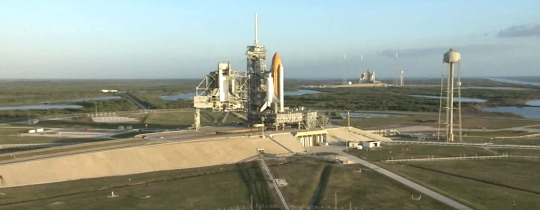
There's also a playlist (course there is) on Spotify | on YouTube
A selected list of sources (below the fold)

Videos
Space Shuttle Abort Modes Explains the different abort modes for the shuttle, when they would be used, and generally how they work.
Mission Control Practices Launching Discovery Interviews with flight controllers, and footage of both the main control floor and the backrooms
STS-51L - Launch Flight Directors Loop Includes audio and video from the Mission Control Floor during the Challenger launch, explosion, and immediate aftermath
Columbia Breakup in real time Compiles footage from various sources and includes annotated diagrams of the systems which failed.
Inside Mission Control During STS-107 Columbia's Failed Re-entry and disaster No commentary or shuttle footage, audio and video of the flight controllers only
STS-107 Re-entry live NASA TV coverage of the Columbia accident Includes Public Affairs Officer commentary
STS-71 launch & landing TV coverage of a shuttle launch from 1995
NASA RTLS Launch Abort Simulation - Discovery with Orbiter visuals added Audio from a simulated shuttle launch abort at NASA Johnson
Commercial Crew Progress Status Update 2013 presentation describing NASA’s commercial crew program and its progress at the time
Podcast is Not an Option, Episode 73 (with Gary Jordan) Interview with present-day Public Affairs Officer
Space Shuttle Flyout Series: Launch Directors Interviews with launch directors from NASA Kennedy, as well as footage of the firing room floor

Articles, documents, and diagrams (not including wikipedia we all know about wikipedia already)
Rogers Commission Report on the Space Shuttle Challenger Accident excerpted and adapted in the text of the story (see page 198)
Transcript of Mission Control flight loop for Columbia's final flight
Challenger timeline includes transcripts of audio from the NASA Select broadcast as well as the flight controller loops
Space Shuttle: Orbiter Processing from Landing to Launch (PDF)
Going boldly: Behind the scenes at NASA’s hallowed Mission Control Center
The Final Count Down: A Review of Three Decades of Flight Controller Training Methods for Space Shuttle Mission Operations (PDF) includes a diagram of the control floor and descriptions of controller positions
Mission Control Center: The Heart of US Manned Spaceflight Operations this is the personal website of a former Flight Dynamics Officer [FDO] flight controller, the layout is a little wacky but there’s good stuff in here
Launching a Shuttle: NASA Countdown to Blastoff focuses on Launch Control at the Kennedy Space Center
Space Shuttle Propulsion Systems (PDF)
Building on a Mission: The Houston Mission Control Center
SPACE SHUTTLE EAST COAST ABORT MODES FOR HIGH INCLINATION LAUNCHES (PDF)
A McDonald’s menu from the 90s
#quackbur#schlackity#dsmp#dsmpshipping#my fic#my only rule for this was that no one could be an astronaut boring desk jobs only#okay there was also the rule that all of the songs on the playlist had to be from the early 90s but that was just a special treat for marro#of course I checked to see what was on the mcdonald's menu at the time who the fuck do you think I am#also this is a little dark but holy shit did I watch space shuttles explode an ungodly number of times while researching this thing
40 notes
·
View notes
Text
The only real metric even worth comparing is person-hours and probe-hours, I think, and even then only relative to location, and even then you might want to break it down by instrument/experiment. No point in trying to pit, say, the VeGa 1 balloon against Skylab.
I refuse to give the USSR credit for the first woman in space, though. If you want equality points you have actually keep flying women. Between April 12th, 1961 (first human spaceflight) and December 26th, 1991 (collapse of the USSR) the USSR flew 2* women on 3* person-flights, out of 94*† flying cosmonauts and 142*† person-flights. If we include Interkosmos cosmonauts, these numbers rise to 3 women, on 4 person-flights, out of 101 flying cosmonauts and 150 person-flights.
In that same time, the USA flew 13‡ on 19‡ person-flights, out of 154‡§ flying astronauts and 285‡§ person-flights. If we include payload specialists (whose selection is (was?) more complicated than traditional astronauts) these numbers rise to 15 women on 22 person-flights, out of 154 astronauts and 312 person-missions.
* Not including unflown cosmonauts or Interkosmos cosmonauts †Including Soyuz 1, 11, 7K-T No.39, 7K-ST No.16L, and TM-13 ‡ Including Challenger STS-51L; not including unflown astronauts or payload specialists § Including X-15 flights over 50 miles, even X-15 flight 191, Apollo 1 and Gemini 6; not including Gemini 9, ALT 1-16, or unflown astronauts
Now, 13 is obviously not half of 285. Even if we restrict ourselves just to the Space Shuttle program, 13 is still not half of 201. Obviously inequitable. But 6.7% is a hell of a lot bigger than 2.1%. Today the disparity is even wider -- 20 women and 28 men are active members of the NASA astronaut corps, 1 woman and 22 men are active members of the Roscosmos cosmonaut corps. Only four Russian women have flown to space since 1991, three cosmonauts and an actress. (Not actress-turned-cosmonaut, just actress. She went to the International Space Station to film a movie for state-owned TV broadcaster Channel One Russia.) The US has put up another fifty or so. (exact figure depends on how you want to consider private spaceflights, payload specialists, space tourists, etc.) No Russian woman has flown more than once since Yelena Kondakova in 1997, who flew twice. No Russian or Soviet woman has flown more than twice. There are more American women who have flown to space exactly four times, than there are Russian women who have flown ever. No Russian woman has ever commanded the ISS, or, for that matter, any mission. Arguably the Soviets had one, Valentina Tereshkova "commanded" her single-occupant Vostok 6; but given the technical nature of the Vostok capsule, and the fact her flight was shorter than the three flight preceding her, I'm more inclined to say she was a human life sciences payload. The Soviet Union flew the first woman into space because they heard the US might be doing the same (misconstruing the Mercury 13), and they wanted to be first. Then, they didn't fly a single woman for another twenty years. None of the other four candidates would ever fly. Then the Soviet Union did the first female spacewalk, because they heard the U.S. was going to be doing the same, and they wanted to first. No Soviet or Russian woman has conducted a spacewalk since.
It's shameful. Next time you hear when someone say "the first woman in space was Russian", remember that, in a fight for equality, it's not about the first. It's about the second. The third. The fourth. The fifth. The sixth. The seventh. Forever.
It's about the runners-up. There better be a lot of them.
The Soviets kicked our ass in the space race its so dope "Oh you went to the Moon, yeah thats cool I guess, we got pictures of fucking Venus, you ever been to Venus? No the fuck you did not."
31K notes
·
View notes
Link
Family members of fallen astronauts Kathie Scobee Fulgham, Lowell Grissom, Sheryl Chaffee, and Karen Bassett Stevenson place a wreath at the Space Mirror Memorial at NASA’s Kennedy Space Center Visitor Complex in Florida on Thursday, Jan. 25, 2024, during the agency’s Day of Remembrance. The annual tradition pays tribute to fallen astronauts and astronaut candidates who lost their lives while furthering the cause of exploration and discovery, including the crews of Apollo 1, Challenger STS-51L, and Columbia STS-107. Burt Summerfield, associate director, management, at NASA’s Kennedy Space Center in Florida spoke during the annual Day of Remembrance to honor fallen astronauts and astronaut candidates. “Today is an important day for NASA and the nation to recognize the contribution and sacrifice made in pursuit of space exploration and discovery for all.” Summerfield said. “As we push forward to the Moon and continue our missions to the International Space Station, it’s vital that we always remember and implement the lessons from the past in our preparations.” View additional photos of the Day of Remembrance here. Image Credit: NASA/Kim Shiflett
0 notes
Photo

Happy Memorial Day.
22 notes
·
View notes
Text
Space Shuttle Challenger disaster January 28, 1986

Challenger's STS-51L Crew in the White Room

Zero-g Training

Flight Training

Christa McAuliffe and Barbara Morgan

Pre-launch Breakfast
Remembering Challenger: NASA's 1st Shuttle Tragedy in Photos | Space
89 notes
·
View notes
Photo
[ID: An image of Ace McShane from Classic Doctor Who, from the serial 'Remembrance of the Daleks', showing all of the pins on her leather jacket. Text on the image reads 'Compiled by Nathaniel King, David Nagel, & Kurt Bergeron. The pins are:
1. U.S.S.R./C.C.C.P. Soviet Army Star Pin
2. NASA Enterprise Approach Landing Test Shuttle Patch
3. Free to Fly Harley Davidson Pin (Upside Down)
4. Triumph Pin
5. 1986 Watchmen Pin
6. S.B.I. Magnify Glass Patch
7. Harley Davidson Eagle Pin
8. Kings Full of Aces Pin
9. Metal Whistle
10. Rupert Bear Club Pin
11. American Football Pin
12. Charlton Athletic Pin (Yellow Base)
13. NASA STS-61C Columbia Patch (Season 26 replaced with STS-518 Atlantis Mission Patch)
14. Pirate Pin
15. Ace Roofing Co. Lee
16. Carnaby Street Union Jack Pin
17. Blue Peter Pin (White)
18. Blue Peter Pin (Blue)
19. American Flag Pin
20. Fanderson Pin
21. Pirate Skull with Cross Swords Button
22. NASA STS-51L Challenger Patch
23. Lacrosse Pin
24. Poker Hand Pin (Top Card Ace of Diamonds)
25. Thunderbirds Pin
26. NASA Space Shuttle Pin
27. Ride to Live, Live to Ride Pin
28. Safe Driver Bell Atlantic Patch
29. U.S.S.R./C.C.C.P. Star Patch
30. Nuclear Power? No Thanks Pin
31. Soccer Ball Patch
32. United States Paratrooper Patch
33. 1983 Spiderman Pin
34. B.C. Rich Doubleneck Guitar Pin
35. Brands Hatch Pin
36. 1987 Patch
37. B.S.A. Motorcycles Shoulder Patch (British Small Arms)
38. Camel Pin End ID]

i don’t know how many other people are working on an ace cosplay currently, but in case any of you hadn’t seen this yet, i thought i’d post it. because it’s very very very helpful.
#ace mcshane#still can't believe that ace is a canon communist adfghjjk#dw#reference#classic who#described
638 notes
·
View notes
Text

Today is NASA's Day of Remembrance, which honors those who lost their lives while furthering the cause of exploration and discovery.
We join NASA in remembering the crews of Apollo 1, Space Shuttle Challenger (STS-51L), and Space Shuttle Columbia (STS-107).
36 notes
·
View notes
Text
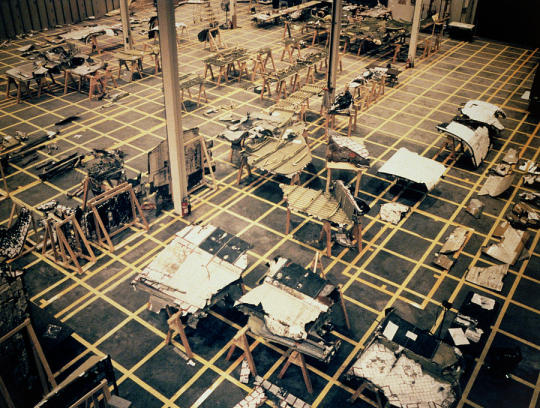
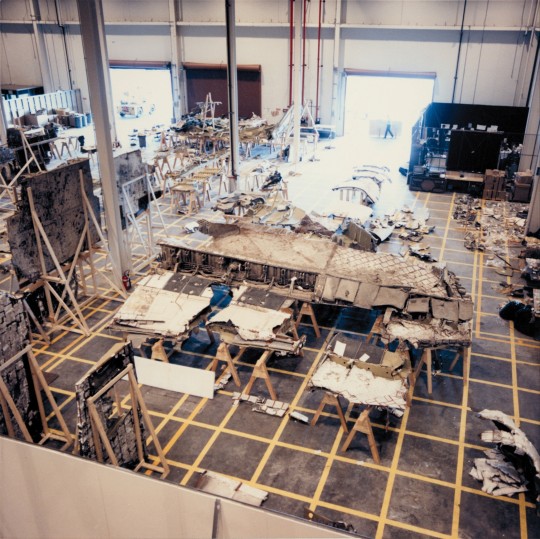
"On January 28, 1986, the Space Shuttle Challenger and her seven-member crew were lost when a ruptured O-ring in the right Solid Rocket Booster caused an explosion soon after launch. After the accident, search and recovery teams worked for months to bring debris from Shuttle to impoundment areas at the Kennedy Space Center and the Cape Canaveral Air Force Station, where reconstruction teams separated the pieces of the orbiter from those of the External Tank and the Solid Rocket Boosters. Taped squares on the floor turned the impoundment areas into a grid in which the reconstruction teams could piece together the Shuttle debris like a puzzle with many missing segments. Shown here is the reassembled Orbiter."
Date: April 9, 1986
Science Photo Library: link
NASA ID:: GPN-2004-00002
#STS-51-L#STS-51L#Space Shuttle#Space Shuttle Challenger#Challenger#OV-099#Orbiter#NASA#Space Shuttle Program#April#1986#debris#my post
56 notes
·
View notes
Photo

Go at Throttle Up
Bermuda Triangle Expedition Discovers Large Piece Of Space Shuttle Challenger
On January 28, 1986, the space shuttle Challenger (STS-51L) took off from the Kennedy Space Center in Florida. Seventy-three seconds later, the shuttle exploded.
A film crew hunting for WWII aircraft lost in the Bermuda Triangle has discovered a 20-foot segment of the space shuttle Challenger off the coast of Florida.
Challenger was destroyed in an explosion 73 seconds after liftoff on Jan. 28, 1986 as millions watched on television.
All seven aboard were killed.
“Of course, the emotions come back, right?” NASA manager Michael Ciannilli, who confirmed the find, told The Associated Press. “My heart skipped a beat, I must say, and it brought me right back to 1986 ... and what we all went through as a nation.”
21 notes
·
View notes
Note
Press releases are absolutely understandable, at worst you might run into a term or two you'll need a glossary for. Things like the Columbia Accident Investigation Board's report, the Rogers Commission Report (Challenger STS-51L) and other such reports are also very readable.
Things like cockpit voice transcripts and such are a lot less readable, but do occasionally have some interesting moments. (It was really interesting reading the Apollo 13 transcript because I had no idea just how much of the Ron Howard film was directly quoted from that transcript.)
i'm currently reading Ignition!, although most of the chemistry goes over my head, it is a nice book to read
do you have recommendations for similar books on the history of rocketry?
I don't think I have many novel thoughts here, nor have I read more than a few books on the subject (not for lack of wanting!) , but I'll give you what I have on what I've done. (Also, anyone who wants to, feel free to comment/reblog with your own suggestions!)
The Right Stuff by Tom Wolfe is great. The movie is... fine, but you really want to read the book. Unlike Ignition, which ignores almost everything for the sake of technical information, The Right Stuff is an analysis of the internal politics of the Mercury program with few technical details.
How Do Astronauts Go To The Bathroom In Space? is 112% out of print, and aimed squarely at an elementary to middle school audience, but IMO totally worth it (as someone who first read it in elementary school) if you happen to find it in a used bookstore. It's basically just 200 pages of little anecdotes from Skylab 4, ranging from "How did you go to the bathroom?" to "What kind of work did you do on Skylab?" to "Did you have trouble swallowing?". Being aimed at kids means that it covers a lot of the minutia of life in LEO that a lot of other books ignore. It also has a certain quaintness I really enjoy, emblematic of other ~80s-90s all-ages science books like The Way Things Work.
Endurance by Scott Kelly is fine but makes some weird decisions. Lots of lingering on his ex-wife.
Moon Shot is an iffily-written piece of propaganda and I wouldn't bother. Besides, it permeated the space nerd culture so heavily you've likely already heard all the interesting anecdotes through osmosis.
There's this book I have titled "Sigma 7: The Six Orbits of Walter M. Schirra--The NASA Mission Reports" published by Apogee books that basically just compiles a bunch of NASA documents relating to the mission together (alongside a CD-ROM with MPEG-1 videos) and while I have serious doubts that you'd be able to it or other books in its series (long out of print, low production run: good luck trying to find it in a used bookstore) I can recommend reading NASA's press releases and transcripts and reports and so forth--they're all available on the internet (if annoying to find). ESA is similar. Roscosmos... not really.
Finally, here are some books I've been meaning to read. I make no assertions about their quality, and in most cases I know very little about them, so take this with a grain of salt:
Lost Moon: The Perilous Voyage of Apollo 13 by Jim Lovell
Last Man on the Moon by Gene Cernan
Dragonfly: NASA and the Crisis Aboard Mir by Bryan Burrough
Carrying the Fire by Michael Collins
Diary of a Cosmonaut: 211 Days in Space by Valintin Lebedev
and all of the Haynes "Owner's Manuals" for the Space Shuttle, Saturn V, etc.
9 notes
·
View notes
Photo

The Tower. Art by Thalia Patrinos, from The Spacecraft Tarot.
Challenger
The Tower is both a self-destruct and reset button.
Sometimes the only way to achieve true change is by experiencing something so destructive, it forces us to reevaluate. Death, pain, and loss are examples of situations that can have such profound effects on our perspectives. Although we may think that we are always safe from tragedy— as safe as someone at the top of a tall tower — the truth is, as human beings on this Earth, we are always vulnerable to some form of unexpected change. The higher we go, the harder we can fall.
Do not fall victim to shortsightedness by believing that you are invincible.
NASA’s STS-51L mission aboard the Challenger space shuttle was to be one like none other. Although this flight was to be the 25th in the space shuttle program and the 10th for the Challenger vehicle, the mission was special for a number of reasons: the seven-person crew was to deploy the second Tracking and Data Relay System satellite into orbit as well as an astronomy satellite designed to observe Halley’s Comet. Perhaps most importantly, STS-51L was to mark the first time NASA welcomed a civilian aboard the space shuttle as a part of the Teacher in Space program. A teacher was invited aboard the flight to engage students all over the world by conducting educational lessons from space.
Read more...
#Thalia Patrinos#The Spacecraft Tarot#The Tower#Major Arcana#Tarot#Spacecraft#Outer Space#Challenger
64 notes
·
View notes
Text
Today, I want to take a moment to recognize the achievements of Judith Resnik, an American astronaut who made history as the second American woman in space. Resnik was born on April 5, 1949, in Akron, Ohio, and earned a bachelor's degree in electrical engineering from Carnegie Mellon University in 1970. She went on to earn a Ph.D. in electrical engineering from the University of Maryland in 1977.
Resnik was selected by NASA in 1978 to be a mission specialist in the space shuttle program. She first flew aboard the space shuttle Discovery in 1984 as part of the crew of mission STS-41D. During this mission, Resnik helped deploy three satellites and conducted various experiments in space. She later flew aboard the space shuttle Challenger in 1986 as part of the crew of mission STS-51L. Tragically, this mission ended in disaster when the Challenger was destroyed shortly after liftoff, killing all seven crew members, including Resnik.
Judith Resnik was a brilliant scientist and a trailblazer for women in the field of space exploration. Her contributions to the space shuttle program and her legacy as a pioneering astronaut will never be forgotten.
This is her flightsuit worn while training.
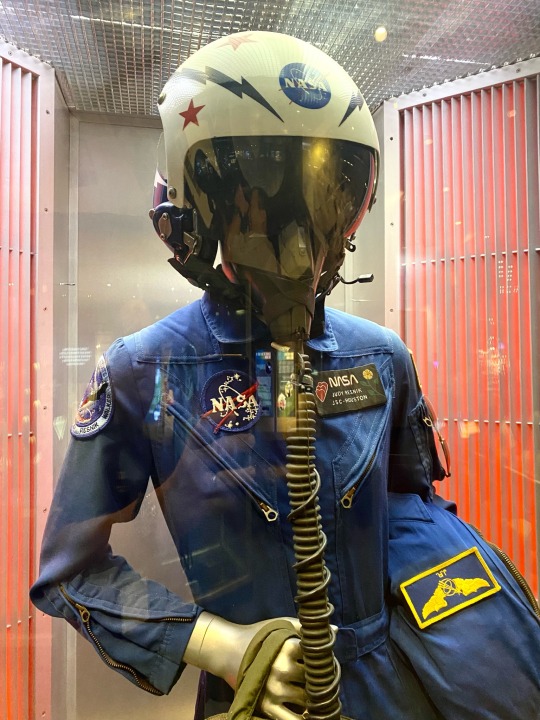
#NASA #seec2023 #johnsonspacecenter #spacecenterhouston #STEM #astronaut #WomenInSTEM #SolarSystemAmbassador
3 notes
·
View notes